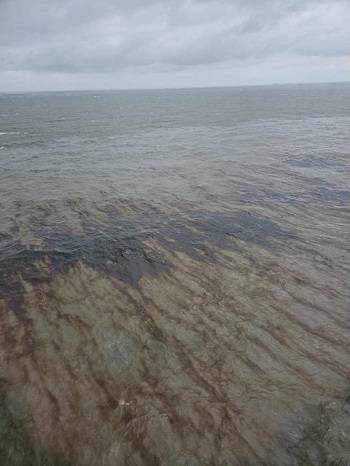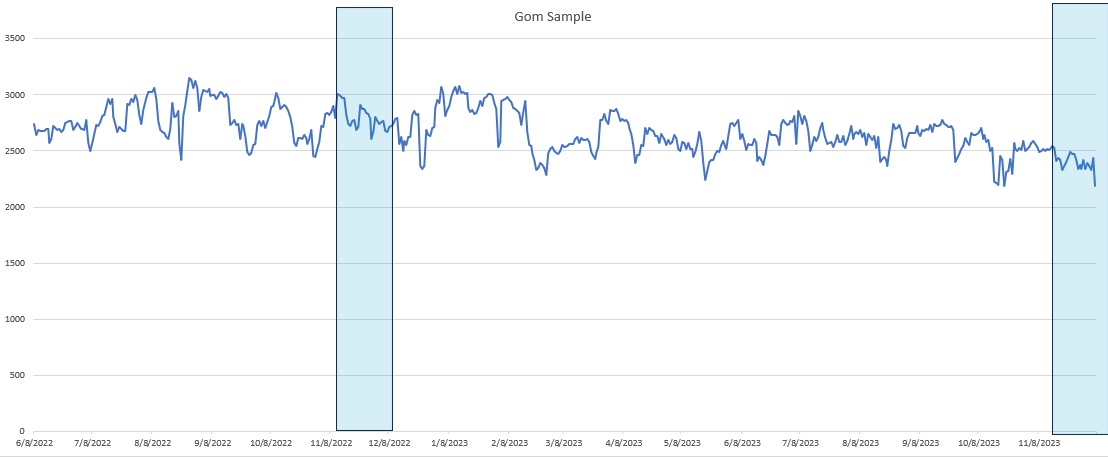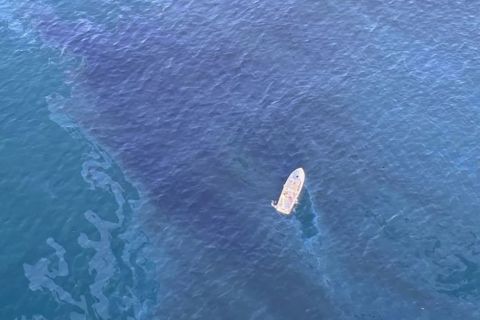
After two mysterious oil spills in the Gulf of Mexico, the U.S. Coast Guard is looking into the Main Pass Oil Gathering’s pipeline for answers. (Source: Shutterstock.com)
Between the evening hours of Nov. 15 and the early morning of Nov. 16, operators in the Gulf of Mexico (GoM) noticed a pressure anomaly in a pipeline some 19 miles off the coast of Louisiana. And while the pipeline was shut in by 6:30 a.m. Nov. 16, approximately 1.1 million gallons of crude had already spilled.

In the aftermath of the spill, Talos, Occidental Petroleum, W&T Offshore, Arena Offshore and other producers that use the pipeline were forced to shut in production. Approximately 62,000 bbl/d of oil production or 3% of all crude production in the GoM was halted as a result. The pipeline is operated by the Main Pass Oil Gathering Co. (MPOG), a subsidiary of Third Coast.
Despite the spill and the region’s shut-in production, Justin Carlson, co-founder and chief commercial officer of East Daley Analytics, told Hart Energy that he does “not see much impact” from the leak, even though numbers have been “down a little recently.”
Talos shared a similar outlook, saying in a Dec. 7 press release that “the impact related to the Main Pass Oil Gathering pipeline shut-in [appears] to be immaterial to [our] fourth quarter 2023 results.”
Much of the leaked oil dissipated on its path, according to a Nov. 21 press briefing by the Unified Command Center, which included the U.S. Coast Guard, MPOG and Louisiana Oil Spill Coordinator Brandy Todd of the National Oceanic and Atmospheric Administration.
“We have noted that the sheen traveled from the source location to the southwest in the direction of the Louisiana Birdfoot Delta,” Todd said. And while that started as a “well-defined … sheen or slick in the beginning of the response” it’s most recent observations “have identified the sheen to be very reduced.”

During the same briefing, Coast Guard Captain Kelly Denning said models predict that “at least 50% of the oil was likely to be mixed in the water column over the first 24 hours and then spread out over a very large area…The model estimated that more than 25% of the oil evaporated in the first 24 hours. No science teams expect that over 75% of the oil was lost to the environment in the first 24 hours.”
While that seemed to bode well for MPOG’s pipeline, another oil discharge was detected on Dec. 5 near the original pipeline’s spill. In a press release the Coast Guard said the spill may have originated from MPOG’s pipeline, but the cause and source of the incident remain under investigation.
ROVs and divers continue to monitor Third Coast, its pipeline and 22.16 miles of surrounding pipelines, as a sustained effort is made to locate the source of the suspected release, the Unified Command Center said in a Dec. 5 press release.
Recommended Reading
Coast Guard Confirms Amplify’s Platform Elly Unrelated to California Oil Sheen
2024-03-11 - Amplify Energy remains confident that the sheen off Huntington Beach, California is not related to its operations.
US Coast Guard Investigating Oil Spill Off California Coast
2024-03-08 - The U.S. Coast Guard is responding to an oil spill off the coast of Huntington beach.
The Need for Speed in Oil, Gas Operations
2024-03-22 - NobleAI uses “science-based AI” to improve operator decision making and speed up oil and gas developments.
Deepwater Roundup 2024: Offshore Australasia, Surrounding Areas
2024-04-09 - Projects in Australia and Asia are progressing in part two of Hart Energy's 2024 Deepwater Roundup. Deepwater projects in Vietnam and Australia look to yield high reserves, while a project offshore Malaysia looks to will be developed by an solar panel powered FPSO.
Trio Petroleum to Increase Monterey County Oil Production
2024-04-15 - Trio Petroleum’s HH-1 well in McCool Ranch and the HV-3A well in the Presidents Field collectively produce about 75 bbl/d.





